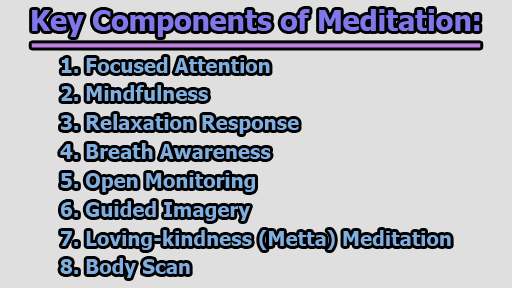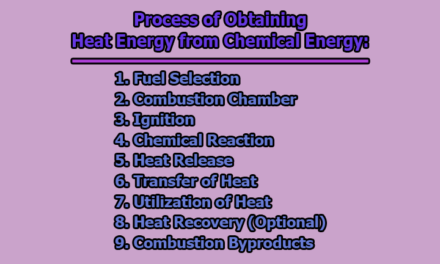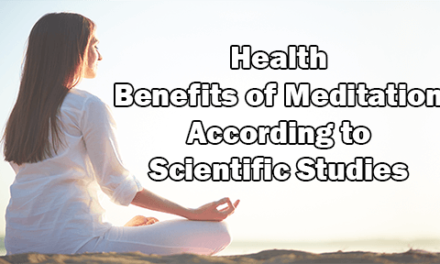Meditation is a diverse and ancient practice that has been embraced across cultures, religions, and philosophies for centuries. While meditation techniques can vary widely, they generally share the common goal of promoting mental clarity, emotional well-being, and a sense of inner peace. The origins of meditation are rooted in various spiritual and cultural traditions, including Hinduism, Buddhism, Taoism, and contemplative practices within different forms of Christianity and Islam. In this exploration, we will delve into the definitions and key components of meditation, shedding light on their significance and the ways in which they contribute to the transformative power of this practice.
Definitions of Meditation:
Meditation has been defined and described by various writers and scholars, each offering a unique perspective based on their cultural, philosophical, or scientific background. Here are several definitions of meditation:
According to Thich Nhat Hanh, a Vietnamese Zen Buddhist monk, and peace activist: “Meditation is not to escape from society, but to come back to ourselves and see what is going on. Once there is seeing, there must be acting. With mindfulness, we know what to do and what not to do to help.”
Philosopher and writer Jiddu Krishnamurti defined meditation as follows: “Meditation is the ending of thought. It is only then that there is a different dimension which is beyond time.”
Jon Kabat-Zinn, a pioneer in the field of mindfulness-based stress reduction, offers a psychological perspective: “Meditation is the process of observing oneself with kindness and curiosity and letting go of judgments.”
Richard Davidson, a neuroscientist known for his research on the effects of meditation on the brain, provides a scientific viewpoint: “Meditation is a family of mental training practices that are designed to familiarize the practitioner with specific types of mental processes.”
Swami Satchidananda, a prominent yoga teacher, defines meditation as: “The continuous flow of perception or thought, just like the flow of water in a river.”
Thomas Merton, a Trappist monk and mystic, provides a contemplative Christian perspective: “Meditation is the way to listen to the silence in the heart, the way to listen to your soul.”
Sharon Salzberg, a well-known meditation teacher, offers a contemporary mindfulness perspective: “Meditation is the only intentional, systematic human activity that at bottom is about not trying to improve yourself or get anywhere else, but simply to realize where you already are.”
Rumi, a 13th-century Sufi poet and mystic, provides a poetic perspective: “Meditation is the dissolution of thoughts in eternal awareness or pure consciousness without objectification, knowing without thinking, merging finitude in infinity.”
Form the above definitions, we can say that meditation connects the mind and the body, bringing mental and physical peace. It typically requires more of a pause than mindfulness and requires concentration, not just attention.
Key Components of Meditation:
While various meditation techniques exist, they share common key components that contribute to their effectiveness in promoting mental, emotional, and physical well-being. Key components of meditation typically include:
1. Focused Attention: Central to many meditation techniques is the cultivation of focused attention. Practitioners are encouraged to direct their awareness to a specific point of focus, which could be the breath, a mantra, a visual object, or even a specific thought or sensation. This intentional concentration serves multiple purposes:
- Enhanced Concentration: Focused attention meditation trains the mind to concentrate on a single point, enhancing overall concentration and mental discipline. This skill can extend beyond the meditation session into daily activities.
- Mindfulness Development: Focused attention lays the foundation for mindfulness, the ability to be fully present in the current moment without distraction. This quality of awareness is fundamental to many meditation practices.
- Reduction of Mental Clutter: By concentrating on a singular point, individuals can reduce mental clutter and distractions, creating a mental space that fosters clarity and inner stillness.
2. Mindfulness: Mindfulness, a term rooted in Buddhist philosophy, has become a cornerstone of many meditation practices. It involves maintaining a non-judgmental awareness of one’s thoughts, emotions, bodily sensations, and the surrounding environment. Key aspects of mindfulness include:
- Present-Moment Awareness: Mindfulness encourages individuals to be fully present in the current moment, rather than dwelling on the past or anticipating the future. This heightened awareness contributes to a more profound and direct experience of life.
- Acceptance: Mindfulness involves accepting thoughts and feelings without judgment. Instead of categorizing experiences as good or bad, individuals learn to observe them impartially, fostering a sense of equanimity.
- Non-Reactivity: Practicing mindfulness cultivates a non-reactive stance towards thoughts and emotions. Rather than being swept away by them, individuals observe these mental phenomena with detachment, reducing impulsivity and emotional volatility.
3. Relaxation Response: Meditation is often associated with the activation of the relaxation response, a physiological state characterized by decreased heart rate, relaxed muscles, and reduced levels of stress hormones. Key components of the relaxation response include:
- Release of Tension: Many meditation techniques incorporate practices that encourage the release of physical tension. Progressive muscle relaxation or body scan meditations involve systematically relaxing different parts of the body, promoting a state of deep relaxation.
- Parasympathetic Activation: The relaxation response is linked to the activation of the parasympathetic nervous system, often referred to as the “rest and digest” system. This counteracts the stress response, fostering a sense of calm and balance.
- Stress Reduction: By inducing the relaxation response, meditation becomes a powerful tool for reducing overall stress levels. Chronic stress has been linked to various health issues, making stress reduction a key component of holistic well-being.
4. Breath Awareness: A significant component of many meditation traditions is breath awareness. The breath serves as a focal point for attention and mindfulness. Key aspects of breath awareness include:
- Anchoring the Mind: The breath is a readily available and constant point of focus. By anchoring attention to the breath, individuals create a stable foundation for their meditation practice, preventing the mind from wandering.
- Body-Mind Connection: Breath awareness emphasizes the connection between the body and mind. Observing the breath not only calms the mind but also fosters a deeper awareness of the body’s sensations and rhythms.
- Mindful Breathing Techniques: Various meditation traditions employ specific breathing techniques, such as diaphragmatic breathing or alternate nostril breathing. These techniques can have specific effects on the nervous system and mental states.
5. Open Monitoring: In contrast to focused attention, open monitoring meditation involves observing thoughts and sensations without attachment or engagement. This observational approach contributes to a non-reactive and impartial awareness. Key elements of open monitoring include:
- Detached Observation: Open monitoring encourages individuals to observe thoughts and sensations as they arise without becoming entangled in them emotionally. This detachment fosters a sense of inner space and freedom.
- Insight Development: By observing thoughts without immediate judgment, individuals may gain insights into the nature of their mind, patterns of thought, and the impermanent nature of mental phenomena.
- Expanded Awareness: Open monitoring broadens awareness to include a wide range of experiences, both internal and external. This inclusivity contributes to a comprehensive understanding of the present moment.
6. Guided Imagery: Guided imagery or visualization is a component of meditation that involves creating mental images to evoke specific emotions or sensations. This can be guided by a teacher or facilitated through recorded scripts. Key aspects of guided imagery include:
- Emotional Activation: Visualization engages the mind in a way that can activate emotions and sensations associated with the imagined scenario. This can be used to promote relaxation, positive emotions, or healing.
- Mind-Body Connection: Guided imagery strengthens the connection between the mind and body. As the mind vividly imagines a scenario, the body often responds physiologically, influencing factors such as heart rate, muscle tension, and even immune function.
- Healing and Empowerment: Visualization is often used for healing purposes, envisioning the body’s health and vitality. It can also be employed for personal development, allowing individuals to visualize and manifest positive outcomes in various aspects of their lives.
7. Loving-kindness (Metta) Meditation: Loving-kindness meditation, also known as Metta meditation, involves cultivating feelings of compassion and goodwill towards oneself and others. Key components of Metta meditation include:
- Self-Compassion: Metta meditation typically begins with directing loving-kindness towards oneself. This fosters a sense of self-compassion, which is foundational for extending compassion to others.
- Expansion of Compassion: The practice involves progressively extending loving-kindness to friends, family, acquaintances, and even to those with whom one may have difficulties. This expansion of compassion contributes to a broader sense of interconnectedness.
- Positive Affirmations: Metta meditation often includes the repetition of positive affirmations or phrases such as “May I/you be happy, may I/you be healthy.” These phrases serve as vehicles for generating feelings of love and goodwill.
8. Body Scan: Body scan meditation is a practice where attention is systematically directed to different parts of the body, often starting from the toes and moving upward. Key components of the body scan include:
- Body Awareness: The body scan cultivates a heightened awareness of bodily sensations, promoting a sense of embodiment and present-moment awareness.
- Tension Release: By systematically scanning and releasing tension from different body parts, this practice contributes to overall relaxation. It is particularly effective for individuals who carry physical tension due to stress or other factors.
- Mind-Body Integration: The body scan emphasizes the integration of the mind and body. As attention moves through each body part, individuals become more attuned to the subtle sensations and signals from their bodies.
In conclusion, the key components of meditation contribute to its transformative effects on the mind, emotions, and body. Whether through focused attention, mindfulness, relaxation, breath awareness, open monitoring, guided imagery, loving-kindness, or the body scan, meditation offers a versatile set of tools for individuals seeking holistic well-being and personal growth. By integrating these components into a regular practice, individuals can harness the profound benefits of meditation and cultivate a deeper understanding of themselves and the world around them.

Assistant Teacher at Zinzira Pir Mohammad Pilot School and College










